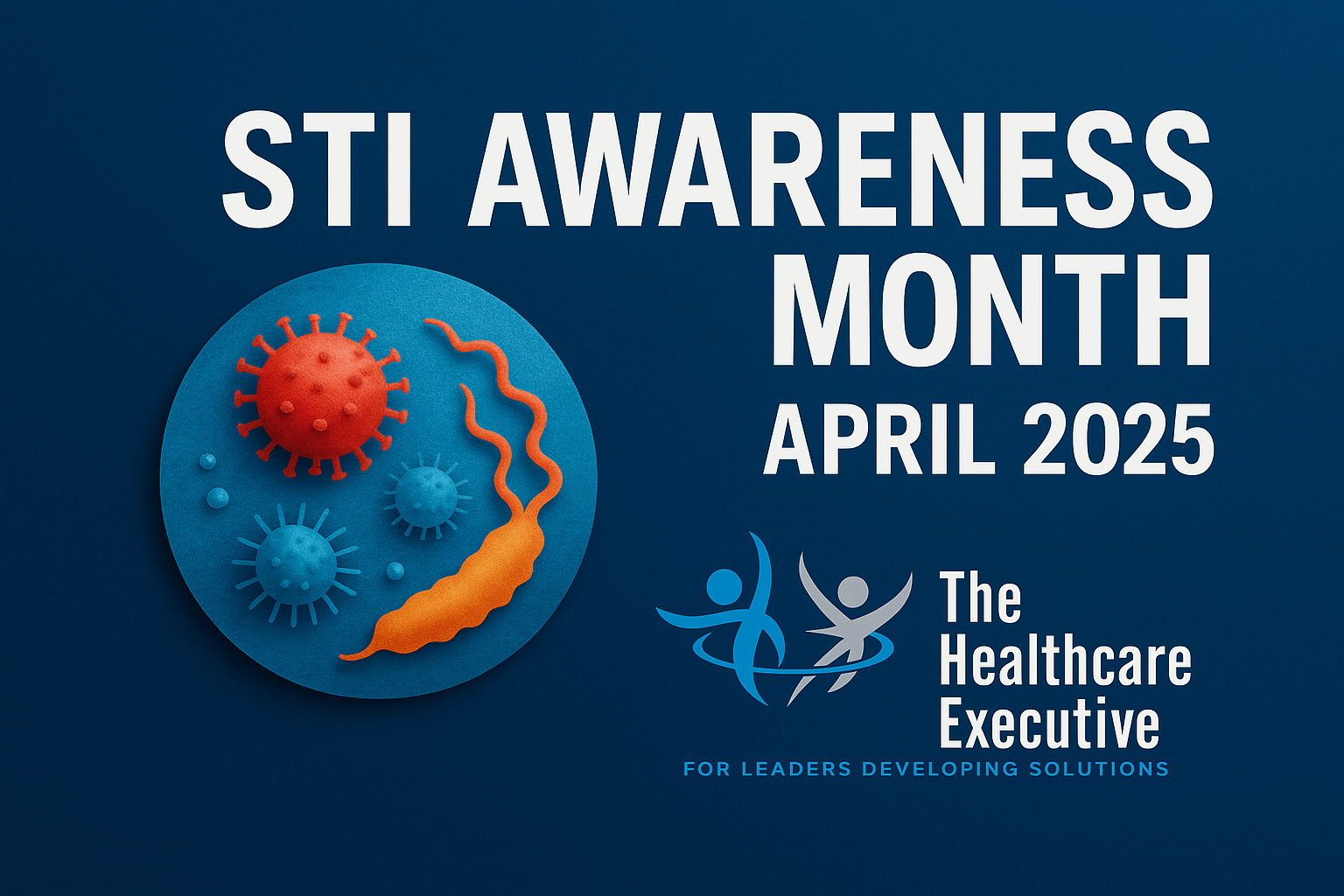STI Awareness and Prevention Month – April 2025

- Posted by Greg Wahlstrom, MBA, HCM
- Posted in Health Observance Calendar
Empowering Healthcare Leaders to Address the STI Epidemic
Published: April 1, 2025
April marks STI Awareness and Prevention Month, a critical time for healthcare executives to prioritize sexual health as a core component of patient safety and preventive care. Sexually transmitted infections (STIs) continue to rise across the United States, with over 2.5 million cases reported in the most recent CDC surveillance data. Despite this surge, stigma and underfunded infrastructure still hinder access to timely testing and treatment. Health systems must respond by embedding STI prevention and education into both outpatient and inpatient workflows. A proactive strategy not only improves public health outcomes but reduces long-term costs associated with untreated infections such as infertility, cancer, and HIV. C-suite leaders are uniquely positioned to shift from reactive care to forward-thinking prevention. It starts with acknowledging that sexual health is public health—and deserves the same executive attention as chronic disease management or surgical safety. Hospital executives must align operations with community realities. Therefore, investing in STI prevention is not optional—it is an ethical imperative.
Healthcare institutions that lead in STI prevention often embrace a cross-functional model rooted in equity and evidence. For instance, University Hospitals Cleveland integrates STI screenings within women’s health and urgent care visits, normalizing sexual health conversations at every patient touchpoint. Meanwhile, Jefferson Health provides patient-facing education with digital consent tools and multilingual resources to reduce barriers to care. These institutions don’t isolate STI care—they embed it into broader systems of quality and prevention. From electronic health record prompts to routine chlamydia and gonorrhea testing during adolescent wellness visits, leaders are creating environments where prevention is embedded—not bolted on. Executives should convene internal task forces with representation from infection control, emergency care, IT, and community outreach to ensure STI efforts are multidisciplinary. By linking prevention with enterprise-wide performance goals, leadership can create scalable, sustainable impact. And when C-suites invest early, the entire community benefits downstream.
Executive leadership also plays a central role in removing systemic barriers to sexual healthcare. Many patients—especially LGBTQIA+, BIPOC, youth, and those without insurance—avoid treatment due to fear, cost, or prior negative clinical encounters. Hospital systems must therefore prioritize inclusive policy reform, frontline staff training, and patient engagement campaigns rooted in empathy. Programs like Children’s Hospital Los Angeles’ Teen Health Center have demonstrated that trusted, nonjudgmental spaces improve testing rates and health outcomes. Similarly, Emory Healthcare’s STD Clinic uses community-based navigators to support follow-up care and reduce drop-off rates. These efforts show that institutional culture matters. Executives must also ensure that metrics around patient access, testing volume, and time-to-treatment are included in quality dashboards—not just infection rates. Data transparency empowers leadership to act before gaps become crises. True progress occurs when strategy, operations, and compassion are aligned.
Beyond hospitals, executives must build collaborative bridges with public health agencies, schools, employers, and community groups. STI prevention thrives in ecosystems of trust and shared accountability. Consider Mass General’s efforts to partner with school districts and workplace wellness programs to normalize sexual health education. Or the innovative STI prevention pop-ups operated by Kaiser Permanente in underserved neighborhoods, offering walk-in testing, telehealth referrals, and immediate counseling. These are not marketing campaigns—they are examples of systems-level problem solving. The C-suite must play a leading role in crafting these partnerships, directing funding, and reinforcing accountability. Leaders must ask: Are we doing enough to meet our community where they are? Are we building access around lived experience? April 2025 is not just a commemorative moment—it is a strategic checkpoint. Hospital executives who ignore STI prevention risk failing their mission. But those who act boldly will lead a new era of care delivery grounded in inclusion and foresight.
As we enter STI Awareness and Prevention Month, healthcare executives must rise to meet this moment. The data is clear, the disparities are urgent, and the path forward is strategic. Whether through clinical integration, inclusive communication, or policy innovation, leadership must signal that sexual health is non-negotiable. From rural clinics to urban trauma centers, every patient deserves respectful, confidential, and evidence-based care. It is time to make STI prevention a boardroom conversation and a budgeted priority. When sexual health is treated with dignity and visibility, we transform not just care outcomes—but institutional culture itself. Let April 2025 be remembered not just for awareness—but for action. Now is the time for every healthcare leader to step up and lead responsibly.
Discover More:
Explore how clinical safety, patient trust, and executive strategy intersect in our related post.



